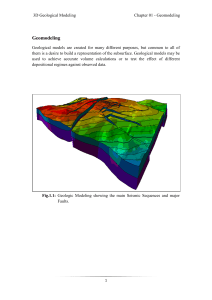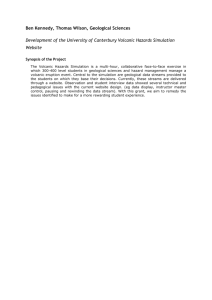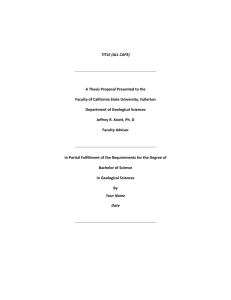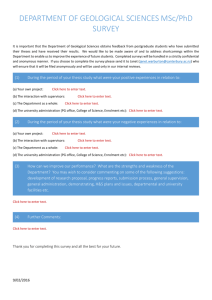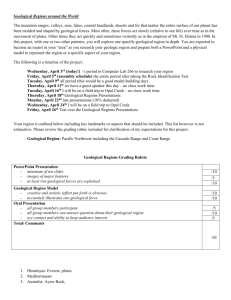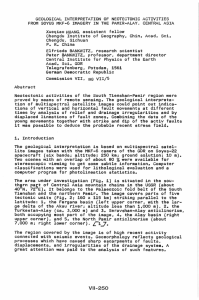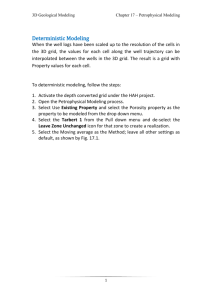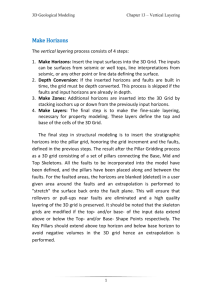Geomodeling
advertisement
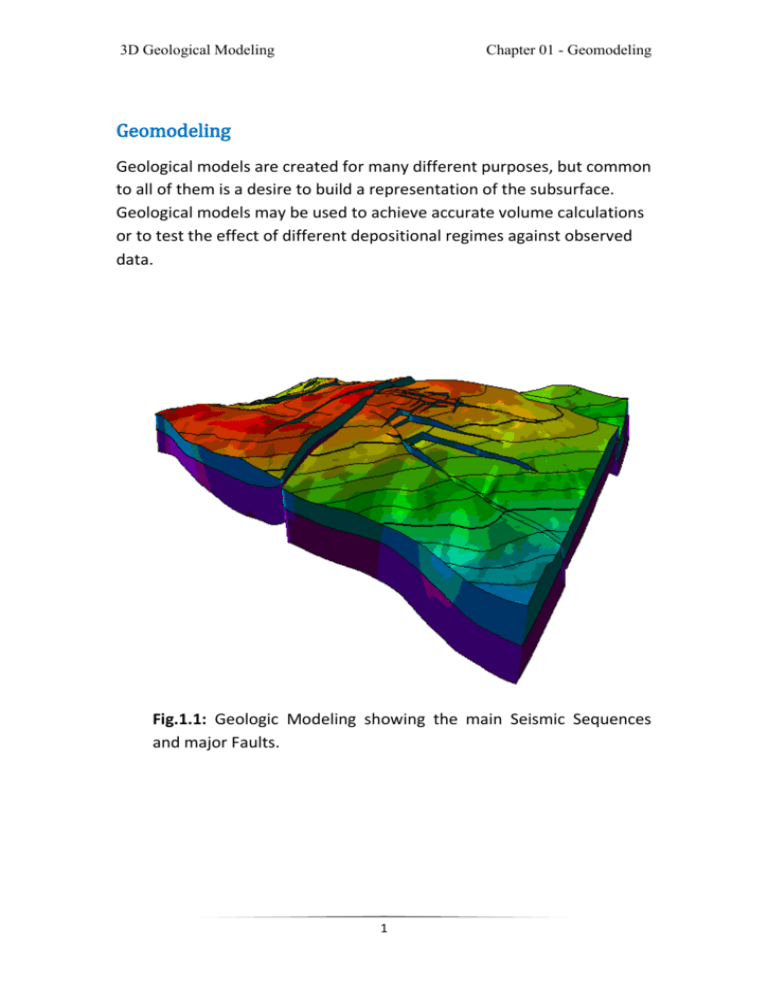
3D Geological Modeling Chapter 01 - Geomodeling Geomodeling Geological models are created for many different purposes, but common to all of them is a desire to build a representation of the subsurface. Geological models may be used to achieve accurate volume calculations or to test the effect of different depositional regimes against observed data. Fig.1.1: Geologic Modeling showing the main Seismic Sequences and major Faults. 1 3D Geological Modeling Chapter 01 - Geomodeling Fig.1.2: Integrated Geocellular with Seismic Lines. 2 3D Geological Modeling Chapter 01 - Geomodeling Fig.1.3: 3D Porosity Modeling. 3 3D Geological Modeling Chapter 01 - Geomodeling 3D Grid Concept In simple terms, a 3D grid divides a model up into boxes. Each box is called a grid cell and will have a single rock type, one value of porosity, one value of water saturation, etc. These are referred to as the cell’s properties. This is a simplification of the true case, but allows us to generate a representation of reality that can be used in calculations, etc. Fig.1.4: 3D Grid 4 3D Geological Modeling Chapter 01 - Geomodeling Fig.1.5: 3D Geobody Modeling with Seismic Cross Section. 5 3D Geological Modeling Chapter 01 - Geomodeling Fig.1.6: 3D Geomodeling with Horizons, Zones and Layers in Vertical Layering. 6 3D Geological Modeling Chapter 01 - Geomodeling Grid Resolution The resolution of the grid will be a key decision when building the model. A high resolution grid (many cells) will allow the modeler to create great spatial complexity, but will result in a model which has many cells and may be cumbersome to use with each process taking a long time. A lower resolution grid will have less scope for complexity, but will be quick to work with and will allow the user to test many possibilities quickly. The decision will depend on the purpose of the model, the detail and amount of data available. There is little point in creating a model with higher resolution horizontally or vertically than the data available for modeling. It is often wise to begin with a coarse model, testing the effects of changes and then increase the resolution as parameters become more certain. Fig.1.7: 3D Geocellular Model with Projection of the Penetrated Wells 7 3D Geological Modeling Chapter 01 - Geomodeling Grid Structure The inclusion or exclusion of faults is another key decision in the model building process. When dealing with simulation, the faults may be critical as flow barriers or conduits and could be the key control on results. For volume calculations they may also be important in defining the geometry of the reservoir, however, including faults requires a number of decisions to be made regarding their inclusion in the grid and will increase the time taken to create the model. Fig.1.8: 3D Structural Modeling with main Major and Minor Faults along depth surfaces. 8 3D Geological Modeling Chapter 01 - Geomodeling Fig.1.9: Hotshot of 3D Facies Modeling with Seismic Cross Section. 9
